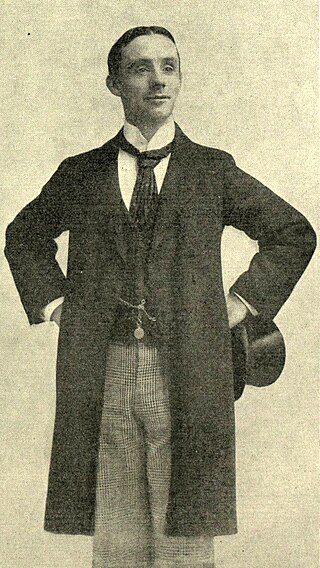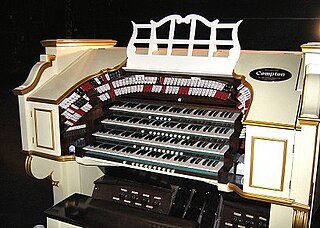
Holborn is a district in central London, which covers the south-eastern part of the London Borough of Camden and a part of the Ward of Farringdon Without in the City of London.

Covent Garden is a district in London, on the eastern fringes of the West End, between St Martin's Lane and Drury Lane. It is associated with the former fruit-and-vegetable market in the central square, now a popular shopping and tourist site, and with the Royal Opera House, itself known as "Covent Garden". The district is divided by the main thoroughfare of Long Acre, north of which is given over to independent shops centred on Neal's Yard and Seven Dials, while the south contains the central square with its street performers and most of the historical buildings, theatres and entertainment facilities, including the London Transport Museum and the Theatre Royal, Drury Lane.

Music hall is a type of British theatrical entertainment that was popular from the early Victorian era, beginning around 1850. It faded away after 1918 as the halls rebranded their entertainment as variety. Perceptions of a distinction in Britain between bold and scandalous Music Hall and subsequent, more respectable Variety differ. Music hall involved a mixture of popular songs, comedy, speciality acts, and variety entertainment. The term is derived from a type of theatre or venue in which such entertainment took place. In North America vaudeville was in some ways analogous to British music hall, featuring rousing songs and comic acts.

Sir Edward German was an English musician and composer of Welsh descent, best remembered for his extensive output of incidental music for the stage and as a successor to Arthur Sullivan in the field of English comic opera. Some of his light operas, especially Merrie England, are still performed.

Strand is a major thoroughfare in the City of Westminster, Central London. The street, which is part of London's West End theatreland, runs just over 3⁄4 mile (1,200 m) from Trafalgar Square eastwards to Temple Bar, where the road becomes Fleet Street in the City of London, and is part of the A4, a main road running west from inner London.

George Wild Galvin, better known by the stage name Dan Leno, was a leading English music hall comedian and musical theatre actor during the late Victorian era. He was best known, aside from his music hall act, for his dame roles in the annual pantomimes that were popular at London's Theatre Royal, Drury Lane, from 1888 to 1904.

Thomas Henry Sargent, known professionally by his stage name Max Miller and billed as The Cheeky Chappie, was an English comedian often considered the greatest stand-up of his generation. He came from humble beginnings and left school at the age of twelve. At the outbreak of the First World War, he volunteered for the army. During his time in the forces, he started a troupe concert party. On leaving the army, he took up work as a light comedian, dancer, and singer. He toured extensively, appearing in variety, revues and by the early 1930s reached the top of the bill in the large music halls including the London Palladium.

The Adelphi Theatre is a West End theatre, located on the Strand in the City of Westminster, central London. The present building is the fourth on the site. The theatre has specialised in comedy and musical theatre, and today it is a receiving house for a variety of productions, including many musicals. The theatre was Grade II listed for historical preservation on 1 December 1987.

Francis Matcham was an English architect who specialised in the design of theatres and music halls. He worked extensively in London, predominantly under Moss Empires, for whom he designed the Hippodrome in 1900, Hackney Empire (1901), Coliseum (1903) and Palladium (1910). His last major commission before retirement was the Victoria Palace (1911) for the variety magnate Alfred Butt. During his 40-year career, Matcham was responsible for the design and construction of over 90 theatres and the redesign and refurbishment of a further 80 throughout the United Kingdom.

Sir Horace Edward Moss was a British theatre impresario and the founder chairman and joint managing director of the Moss Empires Ltd theatre combine which he created in 1899, and floated on the Stock Exchange, after first joining forces with Richard Thornton of Newcastle and later with Oswald Stoll then operating in Wales. From its start and during the 20th century Moss Empires remained the largest group of variety theatres in Britain, with over 50 venues at its height, and was regarded as the largest in the world. It was he who, in 1904, introduced a "four shows a day" system at some of his theatres; he was also the first to allow advance booking of seats in a music hall.
Thomas Barrasford (1859–1910) was a 19th-century British entrepreneur and entertainment impresario, who operated and built a number of theatres across Britain, mainly under the Barrasford Halls brand.
William Robert 'Bertie' Crewe was one of the leading English theatre architects in the boom of 1885 to 1915.
Henry Tudor, who seized the English throne as Henry VII in 1485, and married Elizabeth of York, put an end to the Wars of the Roses. Henry VII was a resolute and efficient monarch who centralized political power in the crown. He commissioned the celebrated "Henry VII Chapel" at Westminster Abbey, and continued the royal practice of borrowing funds from the City of London for his wars against the French. He repaid loans on their due dates, which was something of an innovation. Generally, however, he took little interest in enhancing London. Nonetheless, the comparative stability of the Tudor kingdom had long-term effects on the city, which grew rapidly during the 16th century. The nobility found that power and wealth were now best won by competing for favor at court, rather than by warring amongst themselves in the provinces as they had so often done in the past. The Tudor period is considered to have ended in 1603 with the death of Queen Elizabeth.
Charles Morton was a music hall and theatre manager. Born in Hackney, east London, he built the first purpose-built Tavern Music hall, the Canterbury Music Hall, and became known as the Father of the Halls.

John Compton (1876–1957), born in Newton Burgoland, Leicestershire was a pipe organ builder. His business based in Nottingham and London flourished between 1902 and 1965.

Helena Cécile Ernstone,(néeHélène Cecilia Schott; circa 1841 Gibraltar – 2 July 1933 Ferndown, Dorset, England) was an English actress who appeared in London theatres from 1867 to 1881.
Abanazar is a magician and the primary antagonist in the Aladdin pantomime. He was also the basis for Jafar in the Disney version of Aladdin.

Katie Seymour was a British Victorian burlesque and Edwardian musical comedy entertainer who was remembered primarily for her dancing. She was considered, if not the first, one of the first to perform a style of dance called the skirt dance. Seymour began in song and dance routines at a very young age and would go on to appear in a string of highly successful long-running musicals staged at London's Gaiety Theatre during the 1890s. She fell ill in 1903 while on a theatrical tour of British South Africa and died not long after her return voyage home.

Johnnie Cullen and Arthur Carthy, known as Cullen and Carthy, were a British comedy double act who achieved popularity on the British and Irish music hall, circus and variety stages over a career spanning a period of four decades, beginning in the latter part of the Victorian age to the post-war years of the 1920's. Their partnership lasted from 1890 until Cullen's death.